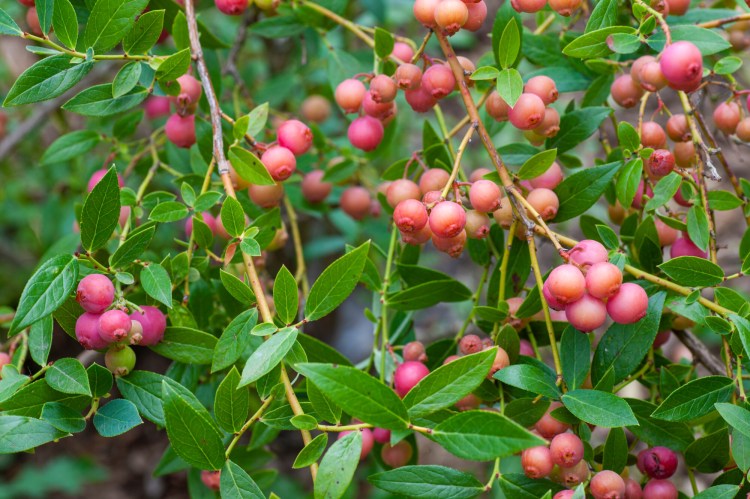I took my own advice. After I wrote on Sept. 25 about getting rid of plants that aren’t working for you, my wife Nancy and I cut down and removed our three Pink Lemonade blueberries.
In 2011, I planted the then-new introductions, which I bought from three different online nurseries, and wrote about them. They’d been introduced a few years earlier and got a lot of good press for their attractive pinkish-white flowers; sweet, flavorful fruit; and attractive fall foliage.
So much for the hype. Normally, high-bush blueberries produce fruit about three years after you plant them. But this year, more than a decade (!) later, our bushes produced their first fruit, not many and not tasty, either – sweet but bland. The flowers were small and barely noticeable, and the foliage wasn’t any prettier than the other high-bush blueberries we grow.
As a garden writer, at least I got some fodder for this column. But others who planted Pink Lemonade blueberries didn’t even get that benefit. Belated kudos to Jeff O’Donal of O’Donal’s Nursery in Gorham, who gently chastised me 11 years ago for promoting “Pink Lemonade” based merely on what I’d read.
So, this is a gentle reminder to be careful not to rush out and buy new plant introductions just because you hear a lot of buzz (and I don’t mean the bee sort). They may not be as good as they sound. Chances are good that the old reliable varieties with a proven record will serve your garden better.
Until a few years ago, I used to write a column every January about award-winning plants, in part because the awards gave me something to write about in a time when not a whole lot of gardening is going on. I stopped because some of the programs, such as the All-America Rose Selections and Cary Award, were discontinued. By then, I’d also learned that award-winning plants are not always winners in my garden.
The one awards program I still follow is All-America Selections (AAS). Johnny’s Selected Seeds in Winslow has developed 12 AAS winners in the past, most recently in 2018, for its cayenne pepper Red Ember and grape tomato Valentine. At the time, I interviewed Johnny’s chairman, Rob Johnston, who said that developing an AAS winner involved more than a decade of work with no assurance about what would result. Johnston also said that his two favorite introductions that year, the summer squashes Tempest and Zephyr, hadn’t won.
My favorite Johnny’s AAS winner remains Bright Lights Swiss chard, a reliable edible that is gorgeous enough to appear in ornamental gardens.
I also pay attention to AAS winners because most of them are vegetables or annuals. If you’re unhappy with their performance, you just don’t plant them the next year. You don’t end up giving them valuable garden space for more than a decade before removing them.
Of the 2023 AAS selections that have been named already, none is from Johnny’s and none is anything I’ll rush out to buy. Maybe in a few years, once they’ve had a chance to prove their worth.
I also still pay attention to the Perennial Plant Association plant of the year, because it is one plant, not a list. The 2023 selection is Rudbeckia American Gold Rush, a black-eyed Susan with long-lasting, bright yellow flowers and foliage covered with silvery hairs that reflect the sun. This species was an AAS winner in 2020, so it does have a track record, and it’s attractive. In addition, while American Gold Rush is a cultivar, rudbeckias are native plants that are great for pollinators.
We won’t be buying any, though. We’ve already got rudbeckias, which have spread quickly and occupy more than their share of our gardens. Nancy even had to remove some that were encroaching on nearby plants she likes more.
Tom Atwell is a freelance writer gardening in Cape Elizabeth. He can be contacted at: tomatwell@me.com.
Send questions/comments to the editors.



Success. Please wait for the page to reload. If the page does not reload within 5 seconds, please refresh the page.
Enter your email and password to access comments.
Hi, to comment on stories you must . This profile is in addition to your subscription and website login.
Already have a commenting profile? .
Invalid username/password.
Please check your email to confirm and complete your registration.
Only subscribers are eligible to post comments. Please subscribe or login first for digital access. Here’s why.
Use the form below to reset your password. When you've submitted your account email, we will send an email with a reset code.